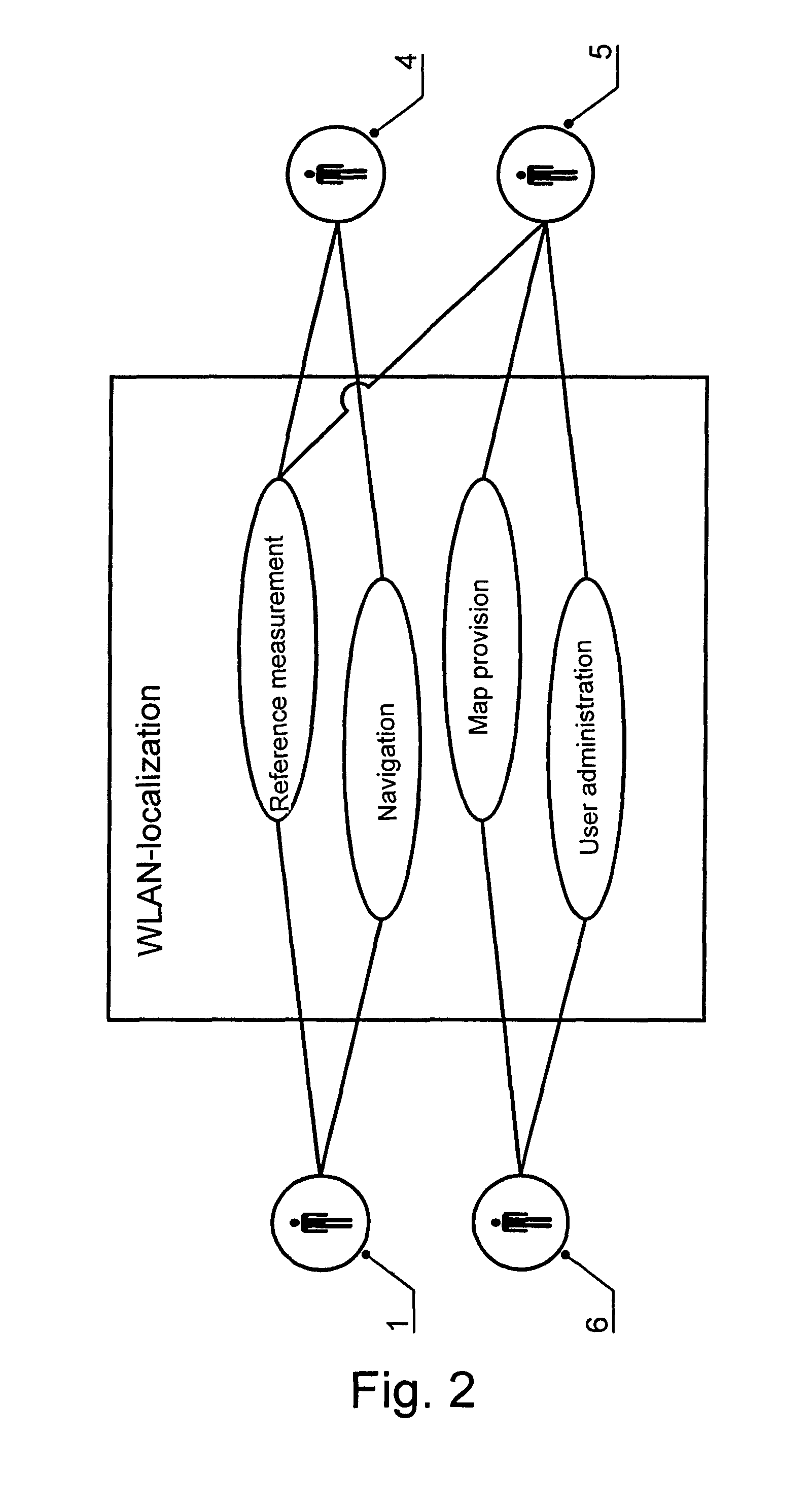Method and system for the localization of a mobile WLAN client
a mobile wlan and localization technology, applied in the field of methods and systems for the localization of mobile wlans, can solve the problems of correspondingly high expenditure, large potential data record requirements, and inability to operate well within a closed building for gsm localization
- Summary
- Abstract
- Description
- Claims
- Application Information
AI Technical Summary
Benefits of technology
Problems solved by technology
Method used
Image
Examples
Embodiment Construction
According to FIG. 1, the system for WLAN localization is made up of four subsystems: a WLAN client 1 located within a WLAN network 2 having a plurality of WLAN stations 3a-3d, a front-end server 4 connected to WLAN stations 3a-3d, a database server 5 and a map-user provider 6.
WLAN client 1 is used for recording received field strengths of WLAN stations 3a-3d, which are needed for ascertaining the static and dynamic reference points, as well as for indoor navigation. The process management and the localization of WLAN clients 1 are undertaken by front-end server 4. Mappings in the form of the plan view of a building or other map material are made available with the aid of map-user provider 6. Moreover, in this exemplary embodiment, the location and user administration is carried out via map-user provider 6, as well. Database server 5 administers the data stock with respect to user data, mapping material and, in particular, the data records used for the localization. The communication...
PUM
 Login to View More
Login to View More Abstract
Description
Claims
Application Information
 Login to View More
Login to View More - R&D
- Intellectual Property
- Life Sciences
- Materials
- Tech Scout
- Unparalleled Data Quality
- Higher Quality Content
- 60% Fewer Hallucinations
Browse by: Latest US Patents, China's latest patents, Technical Efficacy Thesaurus, Application Domain, Technology Topic, Popular Technical Reports.
© 2025 PatSnap. All rights reserved.Legal|Privacy policy|Modern Slavery Act Transparency Statement|Sitemap|About US| Contact US: help@patsnap.com



